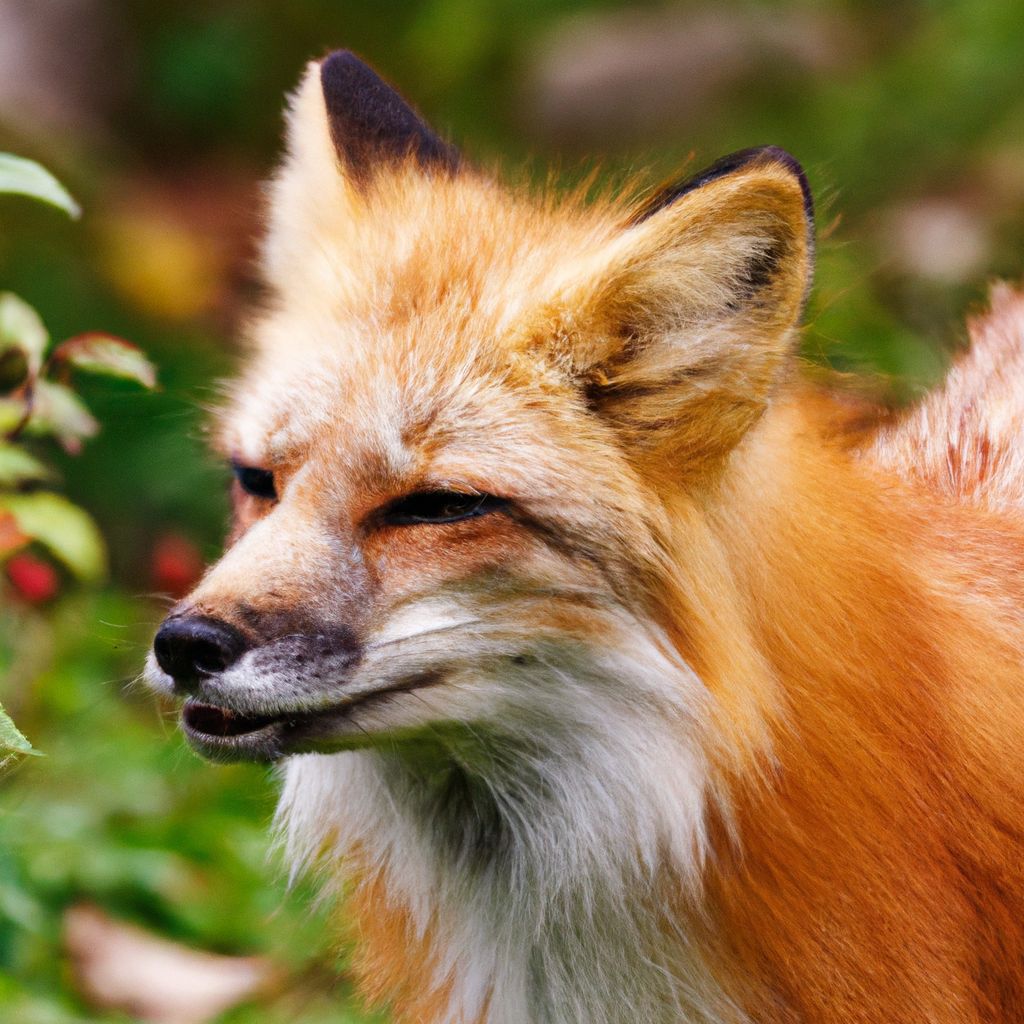Red Fox vs Gray Fox: Exploring the Differences
Red Fox and Gray Fox are two remarkable species of foxes that inhabit various regions across North America. While they share some similarities, they also have distinct characteristics that set them apart. In this article, we will delve into the world of these captivating creatures, examining their physical characteristics, habitat and distribution, behavioral differences, diet and feeding habits, reproduction and life cycle, interaction with humans, and conservation status.
Starting with their physical characteristics, each fox possesses unique traits that contribute to their individual identities. We will explore the distinguishing features of both the Red Fox and Gray Fox. Next, we will examine their habitat preferences and distributions, gaining insights into the specific environments where each species thrives.
Moving on to behavioral differences, we will compare the behavioral patterns of Red Fox and Gray Fox, such as their social structures, hunting techniques, and communication methods. Understanding these behaviors will provide a comprehensive understanding of their respective prey hunting habits.
We will analyze the diet and feeding habits of the Red Fox and Gray Fox, exploring the types of prey they hunt, their foraging techniques, and their roles within the ecosystem. Understanding their dietary preferences will shed light on their ecological impact. For more information on how far foxes travel from their den, you can discover their roaming distance.
Reproduction and life cycle are essential aspects of any species’ existence. We will uncover the reproductive behaviors, mating rituals, and parenting methods of the Red Fox and Gray Fox, revealing the fascinating intricacies of their life cycles.
Furthermore, we will discuss the interactions between these fox species and humans. This includes their historical and cultural significance, as well as instances of human-wildlife conflict and coexistence.
Lastly, we will explore the conservation status of both the Red Fox and Gray Fox. Understanding their population status and the challenges they face in today’s changing world is crucial for taking conservation measures.
By the end of this article, you will have a comprehensive understanding of the similarities and differences between the Red Fox and Gray Fox, gaining insights into these fascinating creatures that inhabit our ecosystems.
Contents
- 1 Physical Characteristics
- 2 Habitat and Distribution
- 3 Behavioral Differences
- 4 Diet and Feeding Habits
- 5 Reproduction and Life Cycle
- 6 Interaction with Humans
- 7 Conservation Status
- 8 Frequently Asked Questions
- 8.1 Question 1: What are the genetic differences between red foxes and gray foxes?
- 8.2 Question 2: How can you visually differentiate between a red fox and a gray fox?
- 8.3 Question 3: What are the preferred habitats of red foxes and gray foxes?
- 8.4 Question 4: What are the main predators of red foxes and gray foxes?
- 8.5 Question 5: What is the lifespan of red foxes and gray foxes?
- 8.6 Question 6: How do red fox pups and gray fox pups differ in terms of birth timing?
Physical Characteristics
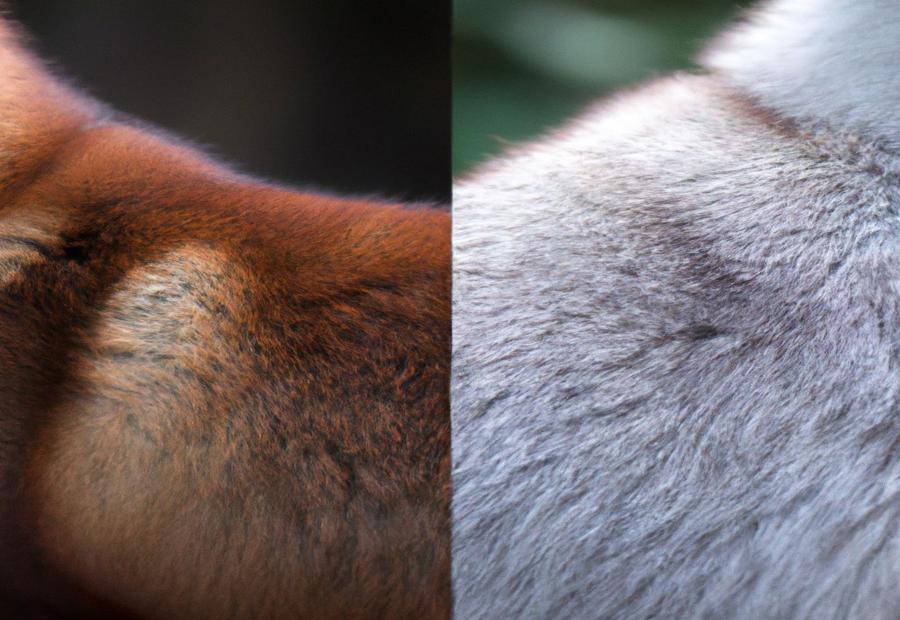
Photo Credits: Foxauthority.Com by Juan Martinez
With a coat of fiery red or a sleek shade of gray, the physical characteristics of foxes are captivating. In this section, we ll delve into the distinctions between the red fox and the gray fox, revealing their unique traits and features. Discover the striking details that set these two fox species apart, as we explore their physical attributes with enthusiasm and a touch of curiosity.
Red Fox
The Red Fox has a reddish-orange fur coat with white underparts. They have a bushy tail and pointed ears. Adult Red Foxes weigh about 7-15 pounds.
Red Foxes are found in forests, grasslands, mountains, and suburban areas. They have a global distribution and can be found in North America, Europe, Asia, and Africa.
Red Foxes are primarily solitary and territorial animals. They are intelligent and adaptable. They are skilled hunters and have a diverse diet.
Red Foxes are omnivores and their diet includes small mammals, birds, insects, fruits, and vegetables. They are opportunistic feeders and their diet varies depending on food availability.
Red Foxes have a monogamous mating system. They breed once a year and have a gestation period of around 52 days. The female gives birth to a litter of 4-6 pups. The pups are weaned at around 8 weeks and become independent at around 6-7 months.
Red Foxes have adapted well to human environments and can be found in suburban areas. They have been both admired and vilified by humans, and their fur has been used for various purposes.
The Red Fox is considered to be of least concern in terms of conservation status. Their populations are stable and not currently threatened. They are adaptable and have successfully adapted to human landscapes.
Keep in mind that these characteristics may vary slightly based on location and specific populations of red foxes.
Gray Fox
The Gray Fox is a small to medium-sized mammal with distinct physical characteristics. Its gray fur has a rusty-red back. It has a slender body with a long bushy tail. Its ears are erect, black on the outside with white on the inside. The face has whiskers and a black stripe running from the eyes to the muzzle. Gray Foxes weigh around 7-13 pounds.
Gray Foxes can be found in forests, woodlands, and scrublands across North America. They can survive in both urban and rural environments, but prefer areas with dense vegetation for cover and food sources.
Behaviorally, Gray Foxes are solitary animals, except during the breeding season. Unlike the Red Fox, they are known for their climbing ability and are often seen in trees. They are primarily nocturnal, hunting at night and resting during the day.
In terms of diet, Gray Foxes are omnivorous and eat small mammals, birds, fruits, and insects. They are skilled hunters and store extra food for later consumption.
Reproductively, Gray Foxes mate in late winter with a gestation period of around 53 days. The female gives birth to a litter of 2-7 pups in an underground den. The pups stay with their mother until they are old enough to care for themselves.
Habitat and Distribution
When it comes to the habitat and distribution of red foxes and gray foxes, there’s plenty to discover. Get ready to explore the unique territories and environments these cunning creatures call home. From the expansive forests where red foxes thrive to the diverse landscapes where gray foxes establish their territories, we’ll dive into the fascinating world of these fox species. Prepare for a captivating journey through their habitats and distribution patterns that will leave you with a newfound appreciation for these charismatic canines.
Red Fox
Red Fox
| Physical Characteristics | The red fox is a medium-sized fox species. |
| Habitat and Distribution | Red foxes can be found across the Northern Hemisphere in forests, grasslands, and mountains. |
| Behavioral Differences | Red foxes are solitary animals, but may form small family groups during the breeding season. |
| Diet and Feeding Habits | Red foxes primarily eat small mammals, birds, reptiles, insects, fruits, and vegetation. |
| Reproduction and Life Cycle | Red foxes breed once a year, usually in winter. The gestation period is around 52 days, and the average litter size is 4-6 pups. |
| Interaction with Humans | Red foxes have adapted to human environments and can be found in urban and suburban areas. They are generally shy and avoid direct contact with humans. |
| Conservation Status | The red fox is not endangered and is listed as “Least Concern” by the International Union for Conservation of Nature (IUCN). |
Pro-tip: If you encounter a red fox in the wild, observe from a distance and avoid approaching or feeding them. Respect their natural behavior and habitat.
Gray Fox
The Gray Fox is a medium-sized fox species with distinct physical characteristics. It has grizzled gray fur on its back and neck, along with rusty red fur on its sides, legs, and tail. It also has a black stripe along its back and a black-tipped tail. Unlike other fox species, it has a dark face mask and a rufous-colored belly. The Gray Fox has a slender body, measuring about 12-15 inches in height and 32-45 inches in length, including the tail. It weighs between 7-15 pounds.
The Gray Fox can be found in various habitats throughout North and Central America, including forests, woodlands, grasslands, and even suburban areas. It is highly adaptable and can thrive in rural and urban environments. It prefers areas with dense vegetation for cover and hunting. The Gray Fox has a widespread distribution, from southern Canada to northern South America, with a higher prevalence in the southern regions.
Gray Foxes are primarily solitary animals known for their climbing abilities. They are excellent climbers due to their partially retractable claws and flexible wrists. They can climb trees to escape or hunt for prey and have the ability to descend trees headfirst. They are also agile and fast, capable of reaching speeds up to 28 miles per hour. Gray Foxes are mostly nocturnal but can be active during the day as well. They make various vocalizations, including barks, screams, and howls.
Gray Foxes have an omnivorous diet, consuming a variety of food sources. Their diet consists primarily of small mammals such as rabbits, voles, mice, and squirrels. They also eat birds, reptiles, amphibians, insects, fruits, berries, and nuts. They adapt their diet according to what is available in their habitat, being opportunistic hunters and scavengers.
During the breeding season, which occurs from late winter to early spring, Gray Foxes mate in a monogamous system. The female gives birth to a litter of 2-7 pups after a gestation period of about 53-63 days. The pups are born blind and dependent on their mother for protection and nourishment. They start exploring outside the den at around 4 weeks old and are weaned at 8-10 weeks. The parents provide food until the pups are capable of hunting on their own. Gray Foxes reach sexual maturity at around 10 months of age.
Gray Foxes generally avoid human interactions and prefer to stay away from human settlements. However, in some suburban areas, they may adapt to living near humans. They are not commonly kept as pets due to their wild nature. In some regions, they may be hunted for their fur or considered a nuisance if they damage property. It is important to respect their natural behavior and habitat.
The Gray Fox is listed as a species of least concern by the International Union for Conservation of Nature (IUCN). It has a stable population and a wide distribution range. However, localized threats such as habitat loss, fragmentation, trapping, and hunting should be addressed through conservation efforts that focus on preserving their natural habitat and minimizing human-wildlife conflicts.
Behavioral Differences
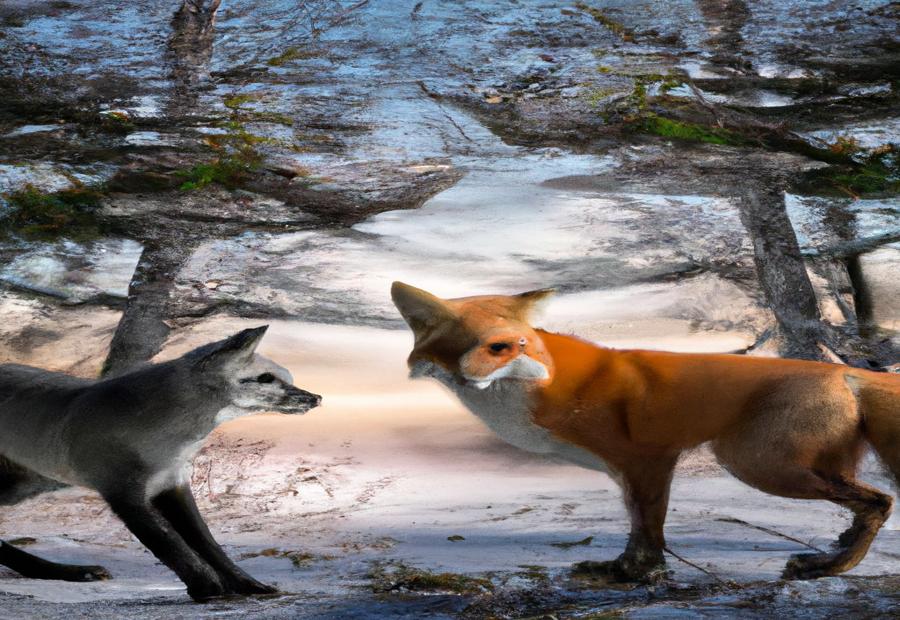
Photo Credits: Foxauthority.Com by Steven Jackson
Curious about the intriguing world of fox behavior? Delve into the fascinating realm of red foxes and gray foxes as we explore their distinct behavioral differences. From the elusive hunting strategies to their social dynamics, you’ll uncover captivating insights into the unique behaviors exhibited by these two fox species. Join us as we unearth the secrets of the red fox and gray fox, shedding light on their fascinating behaviors in the wild.
Red Fox
Red Fox
| Physical Characteristics | |
| Size (Length) | 45-90 cm |
| Weight | 3.6-6.8 kg |
| Fur Color | Reddish-brown |
| Distinctive Features | White underbelly, bushy tail with white tip |
| Habitat and Distribution | |
| Range | North America, Eurasia |
| Habitat | Woodlands, grasslands, mountains, urban areas |
| Behavioral Differences | |
| Social Structure | Generally solitary, but may form small family groups |
| Nocturnal or Diurnal | Nocturnal |
| Diet and Feeding Habits | |
| Primary Diet | Small mammals (mice, rabbits), birds, insects, fruits |
| Preferred Hunting Method | Stalking and pouncing |
| Reproduction and Life Cycle | |
| Gestation Period | 49-58 days |
| Number of Offspring | 4-6 kits |
| Maturation Time | 9-10 months |
| Interaction with Humans | |
| Human Threats | Habitat loss, hunting, trapping |
| Conservation Status | |
| IUCN Red List Status | Least Concern |
Observing red foxes from a safe distance in the wild is important to their survival. Do not attempt to feed or approach them as it can disrupt their natural behaviors and habitats.
Gray Fox
The Gray Fox is an intriguing species with distinct physical characteristics and adaptable behavior. They can be gray, brown, or reddish in color, and have a black stripe along their tail. These medium-sized foxes are smaller than Red Foxes, measuring 22 to 32 inches long with an additional 11 to 16-inch tail. They weigh between 7 to 15 pounds.
Gray Foxes have large ears with pointed tips and a slender face with a dark muzzle. They are found in various habitats such as forests, woodlands, and grasslands in North and Central America.
Gray Foxes primarily eat small mammals, birds, insects, and fruits. They are known to climb trees in search of food. These solitary and nocturnal animals are excellent climbers and agile runners. They possess the ability to retract their claws.
During the breeding season from February to April, Gray Foxes have a gestation period of around 52 days. They typically give birth to a litter of 2 to 7 pups.
Gray Foxes generally avoid human contact and maintain a distance. Although they occasionally approach human settlements, hunting and trapping have significantly reduced their numbers. They were once hunted for their fur. However, they are now listed as least concern by the IUCN Red List, with populations considered stable. Conservation efforts are in place to protect this species and maintain their stable populations.
Diet and Feeding Habits
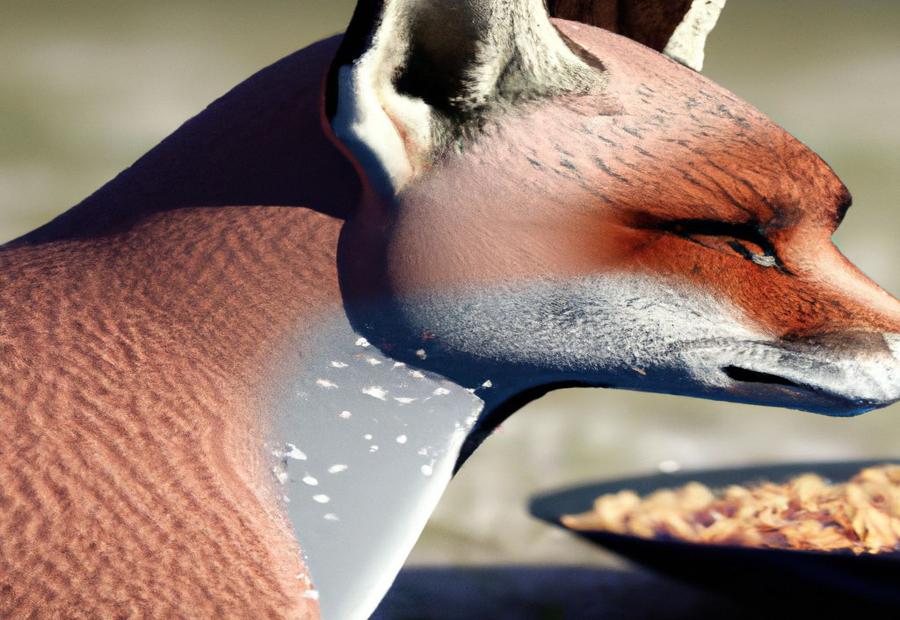
Photo Credits: Foxauthority.Com by Douglas Green
When it comes to the dietary preferences and feeding habits of red foxes and gray foxes, there are fascinating distinctions that set them apart. In this section, we’ll uncover the specificities of each fox’s diet and explore how their feeding habits differ. Get ready to dive into their hunting techniques, preferred prey, and the diverse strategies they employ to satisfy their hunger. It’s time to unravel the culinary adventures of these cunning carnivores!
Red Fox
The red fox (Vulpes vulpes), also known as the red fox or Vulpes vulpes, can be found in various regions such as North America, Europe, and Asia. This species is renowned for its vibrant red-orange fur and its distinctively bushy tail.
Scientifically known as Vulpes vulpes, the red fox has a wide habitat range, including forests, grasslands, and even urban areas.
In terms of diet, the red fox is an omnivorous creature. Its food sources include small mammals, birds, insects, fruits, and vegetation.
Regarding reproduction, mating among red foxes occurs during the winter season. The gestation period lasts about 52 days, and the average litter size consists of 4 to 5 kits.
In its behavior, the red fox is primarily a nocturnal animal. It hunts alone and is highly adaptable to different environments.
While red foxes may occasionally raid poultry farms or engage in minor conflicts, they generally tend to avoid human interactions.
According to the IUCN Red List, the red fox is categorized as “Least Concern” in terms of conservation status.
When encountering a red fox in the wild, it is important to maintain a safe distance and refrain from attempting to approach or feed them. Respecting their natural behavior ensures their ability to thrive in their habitat.
Gray Fox
Gray Fox
The Gray Fox, scientifically Urocyon cinereoargenteus, is a small to medium-sized mammal in the Canidae family. It is native to North and Central America. Here is key information about the
Physical Characteristics
The Gray Fox has a grayish coat with a rusty hue on its back and sides. It has a black stripe running along its back and tail, and a distinct black-tipped tail.
Habitat and Distribution
Gray Foxes are adaptable to various environments and can be found in forests, brushlands, and even suburban areas. They are widely distributed throughout North and Central America, ranging from southern Canada to parts of South America.
Behavioral Differences
The Gray Fox is known for its ability to climb trees, which sets it apart from other fox species. It also displays more solitary behavior compared to the Red Fox.
Diet and Feeding Habits
The Gray Fox has an omnivorous diet, feeding on small mammals, birds, fruits, insects, and carrion. They are skilled hunters and foragers.
Reproduction and Life Cycle
Gray Foxes mate from January to March. After a gestation period of around 53 days, the female gives birth to a litter of 2 to 7 pups. The young foxes stay with their parents until they are old enough to venture out on their own.
Interaction with Humans
Gray Foxes generally avoid human contact. However, they may sometimes raid chicken coops or garbage cans for food. Despite their solitary nature, they are not typically aggressive towards humans.
Conservation Status
The Gray Fox is listed as a species of Least Concern by the IUCN. This indicates that it is not currently facing significant threats to its population. However, habitat loss and fragmentation can impact local populations.
The Gray Fox is a fascinating species with unique adaptations and behaviors that contribute to the ecosystems it inhabits. Conservation efforts are essential to ensure the continued survival of this remarkable mammal.
Reproduction and Life Cycle
Discover the fascinating world of reproduction and life cycles in the Red Fox and Gray Fox species. Uncover the unique aspects and intricacies of their reproductive processes and how it influences their survival. Delve into the world of these resourceful creatures as we explore Red Fox and Gray Fox, shedding light on their distinct characteristics and fascinating adaptations. Get ready for a journey into the captivating realm of wildlife reproduction.
Red Fox
The Red Fox is a fascinating medium-sized carnivore. It possesses beautiful reddish-orange fur on its back and has white underparts. This incredible creature measures approximately 18-33 inches in length (excluding the tail) and weighs between 6-15 pounds. With a long and bushy tail, ranging from 11-20 inches, often with a white tip, the Red Fox can truly captivate anyone. Additionally, the fox’s ears are triangular-shaped and commonly reddish-brown in color.
Red Foxes are highly adaptable and can easily thrive in different habitats such as forests, grasslands, and even urban areas. Being opportunistic omnivores, they have a diverse diet that includes small mammals, birds, fruits, and insects. As nocturnal and solitary beings, these foxes showcase their agility and hunting skills. Their breeding season occurs once a year during early spring, with a gestation period of approximately 52 days. As a result, a typical litter consists of 4-6 charming kits.
Interestingly, Red Foxes have a remarkable ability to adapt to the presence of humans. Thus, they can be frequently found in suburban and urban areas. However, on rare occasions, conflicts can arise when they raid garbage or chicken coops. Personally, I had the privilege of encountering a Red Fox during a morning hike in a national park. This encounter left me in awe as the fox fearlessly hunted for rodents in the tall grass, showcasing its impressive agility. The vibrancy of its reddish-orange fur stood out against the lush green landscape, creating a truly magical experience. This encounter served as a gentle reminder of the crucial need to preserve and respect biodiversity in our wonderful world.
Gray Fox
Edited
The Gray Fox is a unique species known for its fascinating characteristics. Here is a table showcasing key facts about the Ideal Habitat of Foxes:
| Physical Characteristics | Gray Fox |
| Size | 20-30 inches in length, excluding the tail |
| Weight | 7-13 pounds |
| Color | Typically gray with reddish-brown tint on back and sides |
| Tail | Black tip and distinctive black stripe on top |
| Habitat and Distribution | Gray Fox |
| Habitat | Diverse habitats including forests, woodlands, and brushy areas |
| Distribution | Found throughout North and Central America |
| Behavioral Differences | Gray Fox |
| Nocturnal | Primarily active at night |
| Tree Climbers | Ability to climb trees, unlike other fox species |
| Diet and Feeding Habits | Gray Fox |
| Diet | Varied diet including small mammals, birds, reptiles, and insects |
| Reproduction and Life Cycle | Gray Fox |
| Breeding Season | January to March |
| Gestation Period | Around 53 days |
| Interaction with Humans | Gray Fox |
| Adaptability to Urban Areas | Can survive and thrive in suburban and urban environments |
| Conservation Status | Gray Fox |
| Population | Not currently endangered, stable populations |
The Gray Fox is a fascinating species that has adapted well to various habitats, including urban areas. Its ability to climb trees sets it apart from other fox species. With its varied diet and adaptability, the Gray Fox continues to thrive in North and Central America. Conservation efforts are important to ensure the preservation of this unique and beautiful species.
Historically, the Gray Fox has played an important role in maintaining ecosystem balance by controlling populations of small mammals and contributing to seed dispersal. They have also been of interest to researchers studying their behavior and ecology. As we learn more about this species, it is crucial to appreciate and protect the Gray Fox and its valuable role in the natural world.
Interaction with Humans
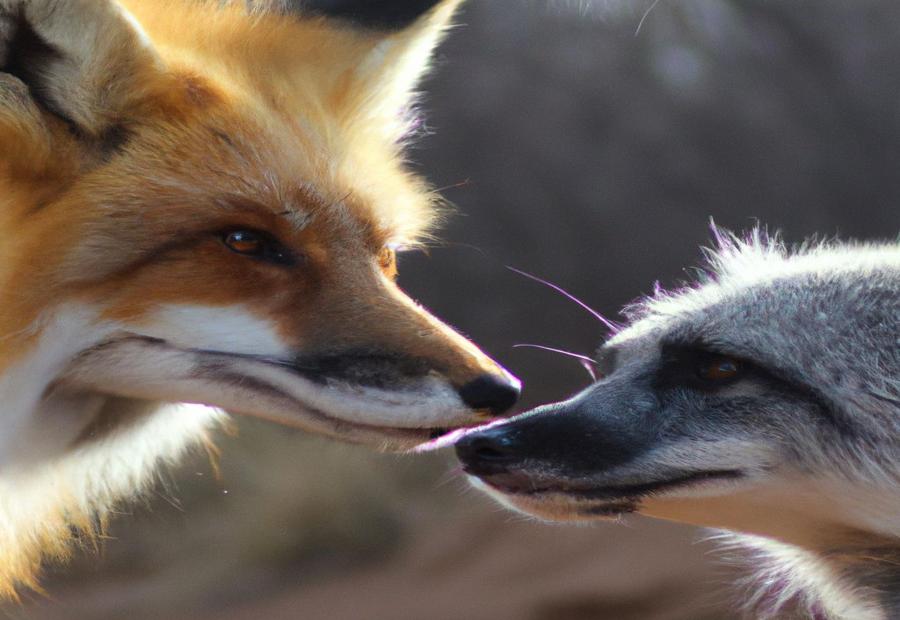
Photo Credits: Foxauthority.Com by Ryan Hill
When it comes to their interactions with humans, the Red Fox and the Gray Fox have intriguing differences worth exploring. Discover the fascinating ways in which these two fox species engage with human populations. From their behaviors and adaptations to their historical interactions, this section will shed light on the unique dynamics that exist between humans and both the Red Fox and the Gray Fox.
Red Fox
The red fox has various physical characteristics that can be summarized in the following table:
| Physical Characteristics | Red Fox |
|---|---|
| Size | Small to medium-sized |
| Color | Reddish-orange with white underparts and a white-tipped tail |
| Weight | Average weight of 7 to 15 pounds |
| Length | Body length ranges from 18 to 35 inches, plus a tail length of 12 to 22 inches |
| Features | Slender body, pointed muzzle, and large ears |
| Habitat | Adaptable to forests, grasslands, and urban areas |
The red fox is known for its agility and cunning nature. It has excellent hearing and vision, which help it hunt effectively. These foxes are opportunistic feeders and have a varied diet, including small mammals, birds, insects, and fruits. They can adapt to both rural and urban environments.
In terms of reproduction, female red foxes typically give birth to 4 to 6 pups. The young foxes stay with their parents until they are around 7 months old and can find their own territories. Red foxes have a moderate conservation status and are not currently endangered.
Throughout history, red foxes have been admired for their beauty and intelligence. They have often appeared in folklore and literature, symbolizing cunning and adaptability. Their striking red coats have made them a subject of fascination and inspiration for artists and writers. The red fox remains an iconic and fascinating creature in the natural world.
Gray Fox
The Gray Fox (Urocyon cinereoargenteus) is a species with unique characteristics and behaviors. It possesses various physical characteristics, including a length ranging from 32 to 45 inches and a weight between 7 to 15 pounds. Its fur coloring is predominantly gray, with a hint of rusty-red on its neck and back.
This species can be found throughout North America, including countries such as the United States, Canada, and Mexico. When it comes to behavior, Gray Foxes are excellent climbers. They utilize their hooked claws to navigate trees with great swiftness. While they are primarily solitary creatures, they may occasionally form small family groups. Additionally, their ability to blend into their surroundings and efficiently utilize camouflage is truly remarkable.
In terms of diet and feeding habits, the Gray Fox has a varied appetite. It consumes a wide range of foods including small mammals, birds, insects, fruits, and berries. When it comes to reproduction and the life cycle of this species, mating typically occurs from February to March. The gestation period lasts for approximately 53 days, and litters usually consist of 1 to 7 pups.
Regarding its interaction with humans, the Gray Fox generally avoids contact and is not considered a threat. However, in some cases, it may become habituated to human presence. The conservation status of the Gray Fox population is currently stable, and it is not listed as a species of concern.
By understanding and respecting the Gray Fox, we can ensure the continued existence and conservation of this species for future generations.
Conservation Status
Did you know that the conservation status of the Red Fox and Gray Fox differs significantly? In this section, we’ll explore the unique circumstances surrounding each fox species and the efforts being made to protect their populations. Brace yourself for a closer look at the distinct conservation concerns and challenges faced by the Red Fox and Gray Fox.
Red Fox
The red fox (Vulpes vulpes) is a widely distributed mammal found across North America, Europe, Asia, and parts of Africa. It has striking red fur, but can also be silver or black.
| Physical Characteristics | Red Fox |
| Size | Small to medium-sized. Length: 18-35 inches, including tail. Weight: 6.5-24 pounds. |
| Color | Red or reddish-brown fur, white underbelly, black legs and ears. Can have color variations. |
| Habitat | Adaptable to various habitats including forests, grasslands, mountains, and urban areas. |
| Behavior | Nocturnal and solitary predators. Excellent hunters, known for their cunning and agility. |
| Diet | Omnivorous. Feeds on small mammals, birds, insects, fruits, and vegetation. |
| Reproduction | Mating season is in winter. Gestation period is around 52 days. Females give birth to litters of 4-6 pups. |
| Interaction with Humans | Often viewed as a nuisance by farmers due to predation on livestock. Can adapt well to urban environments and scavenge for food. |
| Conservation Status | Least Concern. Red fox populations are stable and not currently threatened. |
Fact: The red fox has adapted well to human-dominated landscapes and thrives in various habitats, including suburban and urban areas.
Gray Fox
The Gray Fox, scientifically named Urocyon cinereoargenteus, is a small to medium-sized fox with a grayish coat. It has a long, bushy tail with a black tip and large, triangular ears.
It typically weighs between 7-15 pounds (3-7 kilograms) and can be found in various habitats, including forests, woodlands, and deserts. The Gray Fox is native to North and Central America and primarily feeds on small mammals, birds, reptiles, and insects.
It is nocturnal and solitary, often climbing trees to escape predators. Breeding occurs in early spring, with a gestation period of around 53 days. In the wild, the Gray Fox can live for up to 12 years.
While it typically avoids humans, it may adapt to urban environments. Preserving the habitats of animals like the gray fox is crucial to ensure future generations can appreciate their beauty and ecological role.
Frequently Asked Questions
Question 1: What are the genetic differences between red foxes and gray foxes?
Answer: Red foxes and gray foxes are not hybrids and cannot crossbreed due to genetic differences. Red foxes are more genetically similar to coyotes, Japanese raccoon dogs, and Ethiopian wolves than gray foxes.
Question 2: How can you visually differentiate between a red fox and a gray fox?
Answer: Visually, red foxes have an all-orange body with a white chest and underside, while gray foxes have a gray or silvery coat. Red foxes have a distinctive white tail tip, while gray foxes have legs that are a mix of gray, orange, and white.
Question 3: What are the preferred habitats of red foxes and gray foxes?
Answer: Red foxes are more likely to inhabit open areas like agricultural settings, while gray foxes are more common in forests and swamps. Red foxes can also be found throughout most of the United States, while gray foxes are the only native fox species in North Carolina.
Question 4: What are the main predators of red foxes and gray foxes?
Answer: Both red and gray foxes are preyed upon by birds of prey, large cats, wolves, coyotes, bears, and cougars.
Question 5: What is the lifespan of red foxes and gray foxes?
Answer: Red foxes live for around 4-5 years in the wild and 14 years in captivity, while gray foxes live for around 5-6 years in the wild and 15 years in captivity.
Question 6: How do red fox pups and gray fox pups differ in terms of birth timing?
Answer: Red fox pups can be born at any time of the year, while gray fox pups are born in late winter or early spring.
